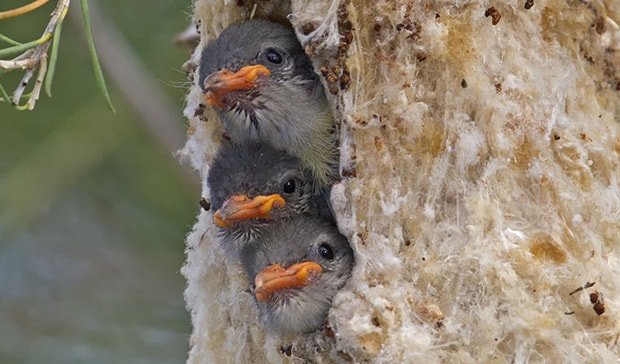Australia is the real home of mistletoe

KISSING UNDER the mistletoe – a romantic Christmas tradition– dates back all the way to Norse folklore and ancient Greek mythology.
The parasitic plant is said to have healing properties, the ability to raise the dead and to protect people from bad spirits. Today, however, its meaning is less complex.
Hang a sprig of mistletoe on your Christmas tree or, more traditionally, in your doorway, and it supposedly gives you permission to plant a kiss on a loved one.
Viscum album more commonly known as the European mistletoe, with its white berries and yellow-green leaves, is the species people are most familiar with.
What people may not know is that Australia is home to more species of mistletoe than anywhere else in the world. We have over 90 different species.
The difference between Aussie mistletoe and the European variety, of which there’s only one species, are the families they belong to.
“Mistletoe plants belong to two different families… traditionally the Loranthaceae, and the Viscaceae,” explains Dr Russell Barrett, a botanist from the Royal Botanic Garden Sydney. “Australia has many species of Loranthaceae, but only a small number of Viscaceae,”
As far as plants go, mistletoes are quite remarkable because they rely exclusively on birds to spread their seeds, Russell says. “Birds eat the seeds and then deposit them on the branch of another tree, usually within minutes.”
From there, these hemi-parasitic plants attach themselves to the stems of a host, either a tree or a shrub, dangling prominently.
Fiery, parasitic beauties
Australia is home to two particularly beautiful mistletoes plants, in Russell’s opinion. The first is the Western Australian Christmas Tree (Nuytsia floribunda) whose bright, fiery orange flowers bloom in the summer months.
“You can’t go past the beauty of a large Nuytsia in full bloom,” Russell.says. “They often rise above the naturally low heath vegetation they grow in, so they are very prominent in the landscape,”
Nuytsia is believed to be the largest parasite in the world, thriving off any plant that comes within a hundred metres of it. Sometimes they even cause power failures when they mistakenly wrap the blades of their roots around cables.
The second is Atkinsonia ligustrina, which produces a beautiful yellow flower and red berry, and can only be found in the Blue Mountains, west of Sydney.
“These are two of just a handful of shrub species in the mistletoe family, and they give us clues as to the origins of mistletoes as they are some of the most ancient ancestors that still exist today,” Russell says.
The mistletoe bird
Native Aussie mistletoes aren’t just beautiful, they’re ecologically important. They’re a source of nectar and habitat for birds.
The mistletoebird (Dicaeum hirundinaceum), a member of the flowerpecker family, has formed a symbiotic relationship with the plants during the past million years. In exchange for its delicious fruits, the mistletoe bird distributes the mistletoe seed far and wide.
The nests these birds create within the mistletoe are a sight to see. Made up of a combination of spider web and flower blossom, they create a warm, cosy-looking nook.
Mistletoe birds themselves aren’t too bad looking either, with their bright orange chest and glossy black wings, which is why Australian Geographic columnist Bec Crew nicknamed them ‘fire-breasted firepeckers’.

(Image credit: Keith Lightbody/Wikimedia)
Indigenous significance
Russell says that for Aboriginal people mistletoes were primarily a source of food because their sticky fruits were sweet. The medical properties of particular species were even used to treat common colds.
They were also an important biological health indicator. “The presence of mistletoe was also an important indicator for the condition of country, as all species are sensitive to fire, so too much burning and they disappear from the landscape,” Russell says.
In his column for AG, science writer Tim Low noted that the Christmas tree was significant to the Noongar people of Western Australia as they believed it was the resting place of the dead.




